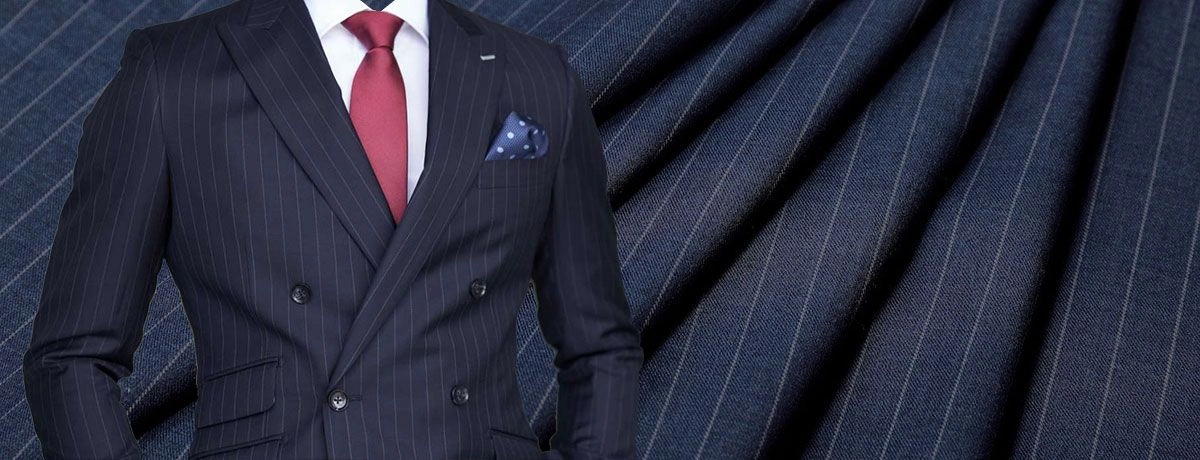The Neapolitan suit, with its soft construction, natural shoulder, and unparalleled comfort, stands as a testament to sartorial artistry. It’s more than just clothing; it’s an experience, a statement of refined taste and effortless sophistication. But what truly elevates a Neapolitan suit from good to exceptional is the fabric. The choice of material dictates not only its drape and feel but also its suitability for different seasons and occasions. For those who appreciate the finer things in life, understanding fabric nuances is as crucial as appreciating the premiata craftsmanship that goes into each stitch.
The Soul of the Suit: Why Fabric Matters
Imagine a beautifully tailored garment that feels stiff and uncomfortable, or one that sags after a few wears. The culprit, more often than not, is the fabric. In Neapolitan tailoring, where the emphasis is on fluidity and a second-skin feel, the fabric’s intrinsic qualities are paramount. It needs to breathe, move with the wearer, and maintain its shape with grace. The right fabric enhances the suit’s natural lines, offering a visual and tactile experience that cheap alternatives simply cannot replicate. It’s about investing in longevity, comfort, and an aesthetic that speaks volumes without uttering a single word.
The Pillars of Neapolitan Suit Fabrics
When delving into the world of Neapolitan suit fabrics, several stand out for their inherent qualities and timeless appeal. Each offers a unique character, making it suitable for different climates and personal preferences.
1. Wool: The Undisputed King
Wool, in its myriad forms, remains the cornerstone of quality suiting. Its versatility, breathability, and natural wrinkle resistance make it an ideal choice for Neapolitan construction.
- Worsted Wool: This is the most common and versatile wool fabric. Made from long, tightly twisted fibers, worsted wool offers a smooth surface, excellent drape, and good durability. It’s available in various weights, from lightweight tropical wools perfect for summer to heavier options for cooler months. For a classic business suit or an elegant evening ensemble, fine worsted wool is a premiata choice that never disappoints.
- Flannel: A brushed wool fabric known for its soft, fuzzy texture and excellent warmth. Flannel suits exude a sophisticated, understated charm, making them perfect for autumn and winter. Its slightly heavier drape complements the relaxed Neapolitan silhouette beautifully.
- Twill (e.g., Gabardine): Characterized by its diagonal rib pattern, twill weaves are durable and offer a subtle sheen. Gabardine, a tightly woven twill, is particularly resistant to wrinkles and water, making it a practical yet stylish option for everyday wear.
- Cashmere Blends: For an added touch of luxury and unparalleled softness, wool-cashmere blends are an excellent option. While 100% cashmere can be prone to creasing, a blend offers the best of both worlds: the structure of wool with the exquisite hand-feel of cashmere.
2. Linen: The Epitome of Summer Chic
Nothing quite says summer sophistication like a linen suit. Its natural breathability and crisp, yet relaxed, texture are perfectly aligned with the Neapolitan aesthetic.
- Pure Linen: Known for its excellent moisture-wicking properties and airy feel, pure linen is ideal for hot and humid climates. While it famously wrinkles, this characteristic is often embraced as part of its charm, lending an air of nonchalant elegance. A well-tailored linen suit, perhaps in a subtle check or a vibrant pastel, is a premiata option for warm-weather events.
- Linen Blends: To mitigate linen’s tendency to crease heavily, blends with wool, cotton, or silk are popular. These blends offer some of linen’s characteristic coolness and texture while improving wrinkle resistance and drape.
3. Cotton: Casual Elegance
Cotton suits offer a more casual, yet still refined, alternative to wool. They are comfortable and breathable, making them suitable for warmer weather and less formal occasions.
- Seersucker: This unique cotton fabric, with its puckered surface, is specifically designed to keep the fabric away from the skin, enhancing airflow. Seersucker suits are a classic choice for summer, offering a distinctive texture and a relaxed, preppy vibe.
- Moleskin: A densely woven cotton fabric with a brushed surface that resembles suede. Moleskin suits are warm and durable, making them suitable for cooler weather and a more rugged, country-inspired look.
- High-Quality Cotton Twill: Similar to cotton chinos, but in suiting weight, these fabrics offer a sturdy yet comfortable option for a less formal suit.
4. Silk: The Touch of Opulence
While less common for full suits, silk can be incorporated into blends or used for specific components to add a touch of luxurious sheen and softness.
- Silk Blends: Often blended with wool or linen, silk adds a subtle luster, a smoother hand-feel, and enhanced drape to the fabric. These blends are perfect for evening wear or special occasions where a touch of refined glamour is desired.
Actionable Tips for Choosing Your Fabric
- Consider the Season and Climate: This is the most crucial factor. Lightweight wools and linens for summer, heavier wools and flannels for winter.
- Think About the Occasion: A formal business environment calls for worsted wool, while a summer wedding might be perfect for linen or a light cotton.
- Prioritize Comfort: The Neapolitan suit is all about comfort. Choose a fabric that feels good against your skin and allows for ease of movement.
- Inspect the Weave: A tighter, more consistent weave generally indicates higher quality and better durability.
- Understand Super Counts (for Wool): While a higher Super S number (e.g., Super 150s) indicates finer fibers, it doesn’t always equate to durability. Finer wools are more delicate. For everyday wear, a Super 100s to Super 130s offers an excellent balance of fineness and resilience.
- Seek Expert Advice: When in doubt, consult with a seasoned tailor. Their expertise in fabric selection is invaluable.
Conclusion
The fabric chosen for a Neapolitan suit is far more than just material; it’s an integral part of its identity, influencing its drape, comfort, and longevity. From the versatile elegance of worsted wool to the breezy charm of linen, each fabric tells a story and contributes to the suit’s overall character. By carefully considering the season, occasion, and your personal preferences, you can select a fabric that not only looks exceptional but also feels like a second skin, reflecting the premiata quality and timeless sophistication that defines Neapolitan tailoring. Invest wisely in your fabric choice, and you’ll possess a garment that will serve you with distinction for years to come.
Author Bio:- An avid connoisseur of classic menswear, the author has spent years exploring the intricate world of bespoke tailoring and sartorial traditions. With a keen eye for detail and a passion for quality craftsmanship, they share insights into the art of dressing well, emphasizing the importance of fit, fabric, and timeless style. Their articles aim to empower readers to build a wardrobe that reflects both elegance and personal expression.






